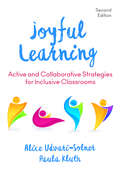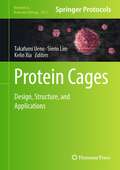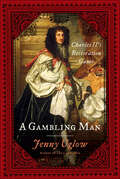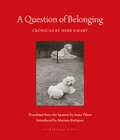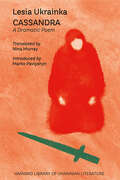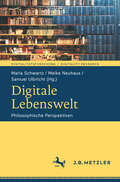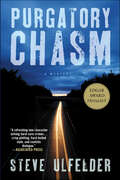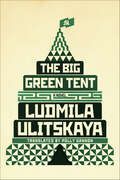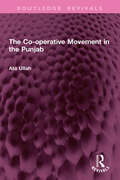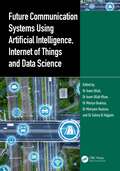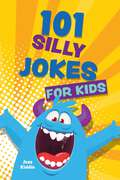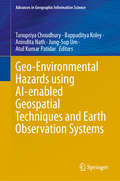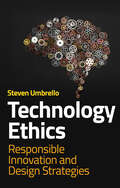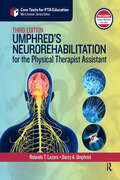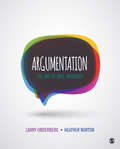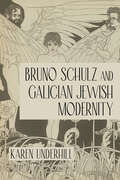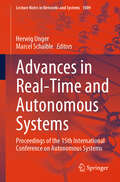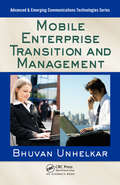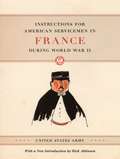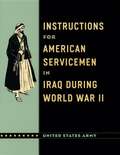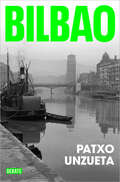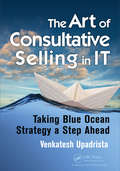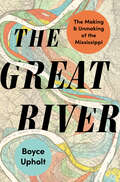- Table View
- List View
Joyful Learning: Active and Collaborative Strategies for Inclusive Classrooms
by Alice Udvari-Solner Paula M. KluthDiscover motivating, personalized learning strategies that all of your students will love! Build an active, responsive, and inclusive classroom where every student benefits. Through step-by-step directions, reproducible handouts, classroom-tested examples, and specific guidelines, teachers and teacher teams will discover 60 activities to help you: Quickly and easily modify and adapt design instruction for diverse learners, including students with cultural, language, learning, physical, or sensory differences Transform lectures and whole-class discussions through dynamic, student-centered learning experiences Immerse students in discussion, debate, creative thinking, questioning, teamwork, and collaborative learning Flexibly co-plan and co-teach with a variety of school professionals The revised edition of this bestselling resource includes step-by-step directions, reproducible handouts, classroom-tested examples, and specific guidelines. Discover quick and easy ways to help all learners participate, contribute, and learn with this unique guide! "This book is a gold mine of strategies to increase engagement, participation, and JOY for all students in inclusive classrooms. The examples and implementation suggestions make is easy for K-12 teachers to select and apply strategies that make learning meaningful and fun." —Barb Gruber, Inclusion Facilitator Maryland Coalition for Inclusive Education "One of the many things I appreciate about this new edition is the range of its examples. Regardless of grade level or subject area, all K-12 teachers will find relevant gems here." —Kelly Chandler-Olcott, Associate Dean for Research Syracuse University
Protein Cages: Design, Structure, and Applications (Methods in Molecular Biology #2671)
by Takafumi Ueno Sierin Lim Kelin XiaThis volume provides the latest methods for synthesis, structural analysis, and elucidation of the mechanism. Chapters guide readers through methods on protein cages for nanotechnology, analyze designed protein cages, determine the structures, and even perform theoretical analysis. Written in the format of the highly successful Methods in Molecular Biology series, each chapter includes an introduction to the topic, lists necessary materials and reagents, includes tips on troubleshooting and known pitfalls, and step-by-step, readily reproducible protocols. Authoritative and cutting-edge, Protein Cages: Methods and Protocols aims to be a useful and practical guide to new researchers and experts looking to expand their knowledge.
A Gambling Man: Charles II's Restoration Game
by Jenny UglowThe Restoration was a decade of experimentation: from the founding of the Royal Society for investigating the sciences to the startling role of credit and risk; from the shocking licentiousness of the court to failed attempts at religious tolerance. Negotiating all these, Charles II, the "slippery sovereign," laid odds and took chances, dissembling and manipulating his followers. The theaters may have been restored, but the king himself was the supreme actor. Yet while his grandeur, his court, and his colorful sex life were on display, his true intentions lay hidden.Charles II was thirty when he crossed the English Channel in fine May weather in 1660. His Restoration was greeted with maypoles and bonfires, as spring after the long years of Cromwell's rule. But there was no way to turn back, no way he could "restore" the old dispensation. Certainty had vanished. The divinity of kingship had ended with his father's beheading. "Honor" was now a word tossed around in duels. "Providence" could no longer be trusted. As the country was rocked by plague, fire, and war, people searched for new ideas by which to live. And exactly ten years after he arrived, Charles would again stand on the shore at Dover, this time placing the greatest bet of his life in a secret deal with his cousin, Louis XIV of France.Jenny Uglow's previous biographies have won the James Tait Black Memorial Prize and International PEN's Hessell-Tiltman Prize for History. A Gambling Man is Uglow at her best: both a vivid portrait of Charles II that explores his elusive nature and a spirited evocation of a vibrant, violent, pulsing world on the brink of modernity.
A Question of Belonging: Crónicas
by HEBE UHART"An exemplary compendium of brief glimpses into the quotidian concerns of everyday South Americans . . . [that] exudes the author&’s characteristically bright insight and sense of attentive amusement." – Kirkus Reviews, starred review25 Crónicas – uniquely Latin American short stories – from a master of the form, a star heralded alongside Samanta Schweblin and Mariana Enríquez for blending insight, honesty, and humorUhart reinvigorates our desire to connect with other people, to love the world, to laugh in the face of bad intentions, and to look again, more closely: from lapwings, road-side pedicures, and the overheard conversations of nurses and their patients, to Goethe and the work of the Bolivian director Jorge Sanjinés.&“It was a year of great discovery for me, learning about these people and their homes,&” Hebe Uhart writes in the opening story of A Question of Belonging, a collection of texts that traverse Argentina, Paraguay, Brazil, Spain, and beyond. Discoveries sprout and flower throughout Uhart&’s oeuvre, but nowhere more so than in her crónicas, Uhart&’s preferred method of storytelling by the end of her life. For Uhart, the crónica meant going outside, meeting others. It also allowed the mingling of precise, factual reportage and the slanted, symbolic narrative power of literature.Here, Uhart opens the door on all kinds of people. We meet an eccentric priest who conducts experiments down by the riverside hoping to land on a cure for cancer; a queenly (read: beautiful and relentlessly indolent) teenage girl; a cacique of the Pueblo Nación Charrúa clan, who tells her of indigenous customs and histories.She writes with characteristic slyness. In the last lines of the title story, Uhart writes, &“And I left, whistling softly.&” Wherever she may have gone, we are left with the wish we could follow alongside.
Cassandra: A Dramatic Poem (Harvard Library of Ukrainian Literature #8)
by Lesia UkrainkaCassandra, the daughter of King Priam of Troy, is cursed with the gift of true prophecies that are not believed by anyone. She foretells the city’s fall should Paris bring Helen as his wife, as well as the death of several of Troy’s heroes and her family. The classic myth turns into much more in Lesia Ukrainka’s rendering: Cassandra’s prophecies are uttered in highly poetic language—fitting for the genre of the work—and are not believed for that reason, rather than because of Apollo’s curse. Cassandra as poet and as woman are the focal points of the drama.Cassandra: A Dramatic Poem encapsulates the complexities of Ukrainka’s late works: use of classical mythology and her intertextual practice; intense focus on issues of colonialism and cultural subjugation—and allegorical reading of the asymmetric relationship of Ukrainian and Russian culture; a sharp commentary on patriarchy and the subjugation of women; and the dilemma of the writer-seer who knows the truth and its ominous implications but is powerless to impart that to contemporaries and countrymen.This strongly autobiographical work commanded a significant critical reception in Ukraine and projects Ukrainka into the new Ukrainian cultural canon. Presented here in a contemporary and sophisticated English translation attuned to psychological nuance, it is sure to attract the attention of the modern-day reader.
Digitale Lebenswelt: Philosophische Perspektiven (Digitalitätsforschung / Digitality Research)
by Samuel Ulbricht Meike Neuhaus Maria SchwartzDer Begriff der Lebenswelt ist ein genuin philosophischer Begriff, der ursprünglich in der Phänomenologie beheimatet ist und inzwischen von vielen anderen Fachwissenschaften sowie Fachdidaktiken aufgegriffen wurde. Geht es nun um die digitale Dimension der Lebenswelt oder – je nach Definition – die digitale Durchdringung derselben, ist die Forschung dementsprechend interdisziplinär aufgestellt. Ein spezifisch philosophischer Zugang zur ‚digitalen Lebenswelt‘ findet sich bis dato nur vereinzelt und soll mit diesem Band bewusst unternommen werden. Nach grundsätzlichen Überlegungen zum Begriff werden ausgewählte Phänomene unter den Aspekten des ‚Selbst‘ und der ‚Gemeinschaft‘ genauer betrachtet (z.B. Leiblichkeit, VR/AR, Internetpornografie, Metaversum, Soziale Netzwerke und digitale Teilhabe). Der letzte Teil befasst sich mit Computerspielen als Bereich, der besonders viele Anknüpfungspunkte philosophischer und ethischer Diskussion bietet.
Purgatory Chasm: A Mystery (The Conway Sax Mysteries #1)
by Steve UlfelderIn the tradition of Robert B. Parker and Dennis Lehane, Steve Ulfelder's crackling mystery features a gritty, razor-sharp new voice in crime fiction. Conway Sax isn't a hired gun or a wise-cracking urbanite. He's just a mechanic trying to make his way, a blue-collar guy whose ideas about family and loyalty are as deeply held as they are strong. "Tander Phigg was an asshole, but he was also a Barnburner. Barnburners saved my life. I help them when I can. No exceptions."The job seems simple. Conway Sax, a no-nonsense auto mechanic with a knack for solving difficult problems, has never liked obnoxious blowhard Tander Phigg. But a promise is a promise. Tander's a Barnburner, a member of the unique Alcoholics Anonymous group that rescued Conway, and when a Barnburner has a problem, Conway takes care of it. Besides, all Tander wants is to get back his baby, a vintage Mercedes that's been in a shady auto shop far too long.But Conway soon discovers there's much more to the problem than Tander first let on – especially when Tander turns up dead. Conway was the last person seen with the victim, and on top of that, he has a record, making him the cops' top suspect. He must catch the killer to clear himself, but beyond that, he's a man who honors his promises, even when the guy he made them to is dead.
The Big Green Tent: A Novel
by Ludmila UlitskayaThe Big Green Tent epitomizes what we think of when we imagine the classic Russian novel.With epic breadth and intimate detail, Ludmila Ulitskaya’s remarkable work tells the story of three school friends who meet in Moscow in the 1950s and go on to embody the heroism, folly, compromise, and hope of the Soviet dissident experience. These three boys—an orphaned poet; a gifted, fragile pianist; and a budding photographer with a talent for collecting secrets—struggle to reach adulthood in a society where their heroes have been censored and exiled. Rich with love stories, intrigue, and a cast of dissenters and spies, The Big Green Tent offers a panoramic survey of life after Stalin and a dramatic investigation into the prospects for individual integrity in a society defined by the KGB. Each of the central characters seeks to transcend an oppressive regime through art, a love of Russian literature, and activism. And each of them ends up face-to-face with a secret police that is highly skilled at fomenting paranoia, division, and self-betrayal. A man and his wife each become collaborators, without the other knowing; an artist is chased into the woods, where he remains in hiding for four years; a researcher is forced to deem a patient insane, damning him to torture in a psychiatric ward. Ludmila Ulitskaya’s novel belongs to the tradition of Dostoevsky, Tolstoy, and Pasternak: it is a work consumed with politics, love, and belief—and a revelation of life in dark times.
The Co-operative Movement in the Punjab (Routledge Revivals)
by Ata UllahFirst published in 1937, The Co-operative Movement in the Punjab presents a sketch of the development and working of the co-operative movement in the region in its various aspects. With its vast and fertile fields, it's sturdy and assimilative manpower, it's beautiful rivers and its marvelous canal system, the Punjab, the sword-arm of the erstwhile Empire, was the stronghold of co-operation in India. The book discusses various themes like agricultural indebtedness and aspects of rural credits; co-operation in India; agricultural credit societies; provincial co-operative bank; women and co-operation; milk recording societies; central banks; cattle insurance; stock breeding societies and land mortgage banks in the Punjab. This book is an important historical reference work for scholars and researchers of Indian history, agricultural history, South Asian history, history of Punjab, and history in general.
Future Communication Systems Using Artificial Intelligence, Internet of Things and Data Science
by Dr Inam UllahFuture Communication Systems Using Artificial Intelligence, Internet of Things and Data Science mainly focuses on the techniques of artificial intelligence (AI), Internet of Things (IoT) and data science for future communications systems.The goal of AI, IoT and data science for future communications systems is to create a venue for industry and academics to collaborate on the development of network and system solutions based on data science, AI and IoT. Recent breakthroughs in IoT, mobile and fixed communications and computation have paved the way for a data‑centric society of the future. New applications are increasingly reliant on machine‑to‑machine connections, resulting in unusual workloads and the need for more efficient and dependable infrastructures. Such a wide range of traffic workloads and applications will necessitate dynamic and highly adaptive network environments capable of self‑optimization for the task at hand while ensuring high dependability and ultra‑low latency.Networking devices, sensors, agents, meters and smart vehicles/systems generate massive amounts of data, necessitating new levels of security, performance and dependability. Such complications necessitate the development of new tools and approaches for providing successful services, management and operation. Predictive network analytics will play a critical role in insight generation, process automation required for adapting and scaling to new demands, resolving issues before they impact operational performance (e.g., preventing network failures and anticipating capacity requirements) and overall network decision‑making. To increase user experience and service quality, data mining and analytic techniques for inferring quality of experience (QoE) signals are required.AI, IoT, machine learning, reinforcement learning and network data analytics innovations open new possibilities in areas such as channel modeling and estimation, cognitive communications, interference alignment, mobility management, resource allocation, network control and management, network tomography, multi‑agent systems and network ultra‑broadband deployment prioritization. These new analytic platforms will aid in the transformation of our networks and user experience. Future networks will enable unparalleled automation and optimization by intelligently gathering, analyzing, learning and controlling huge volumes of information.
101 Silly Jokes for Kids (Silly Jokes for Kids)
by Editors of Ulysses PressLaugh out loud with this book filled hilarious, clean, and silly jokes for kids ages 5 to 10.Packed with knee-slapping jokes and tongue-twisting fun, this joke book is the perfect companion for kids who love to laugh and entertain. Whether you're on a road trip, hosting a sleepover, or simply hanging out in the backyard, 101 Silly Jokes for Kids guarantees to bring smiles, laughter, and maybe even a few eye-rolls from parents and siblings! What happened when the lion ate the comedian? He felt a little funny Why was the man mad at the clock? He was ticked off! How was the snow globe feeling? A little bit shaken What starts with a P and ends with an E and has thousands of letters? The Post Office!
Geo-Environmental Hazards using AI-enabled Geospatial Techniques and Earth Observation Systems (Advances in Geographic Information Science)
by Jung-Sup Um Tanupriya Choudhury Bappaditya Koley Anindita Nath Atul Kumar PatidarThis edited collection provides a comprehensive exploration of cutting-edge ideas, approaches, simulations, evaluations of risk, and systems that enhance the practicality of current geospatial technologies for reducing hazard risks. The various sections within this book delve into subjects such as the foundational principles of Earth Observation Systems (EOS) and geospatial methodologies. Additionally, the text serves as an advisory resource on the collaborative use of satellite-derived data and artificial intelligence to track and alleviate geo-environmental threats. The volume imparts extensive understanding regarding geo-environmental dangers and their analysis via EOS along with geospatial strategies. It encompasses key hazard-related themes including coastal degradation, predisposition to landslides, mapping vegetation coverages, tropical storm patterns, soil depletion due to erosion processes, vulnerability to rapid or extended flooding events, variations in oceansurface temperatures alongside chlorophyll-a levels; it also addresses assessments related to groundwater reserves and quality measures as well as sustainable management practices for watersheds that support community livelihoods—all through leveraging AI-integrated geospatial tools in conjunction with earth observation technologies. Furthermore, this work engages in discourse about systems designed for mitigating these ecological challenges sustainably. Scholars engaged in research activities; educational professionals; those involved in landscape design; engineers working at ground level; individuals responsible for policy-making—all who are concerned with geo-environmental hazards or associated domains—will find valuable insights within these pages.
Technology Ethics: Responsible Innovation and Design Strategies (Philosophy Of Engineering And Technology Ser. #40)
by Steven UmbrelloTechnologies cannot simply be understood as neutral tools or instruments; they embody the values of their creators and may unconsciously reinforce systematic patterns of inequality, discrimination, and oppression.Technology Ethics shows how responsible innovation can be achieved. Demonstrating how design and philosophy converge, the book delves into the intricate narratives that shape our understanding of technology – from instrumentalist views to social constructivism. Yet, at its core, it champions interactionalism as the most promising and responsible narrative. Through compelling examples and actionable tools, this book unravels the nuances of these philosophical positions tailored to foster responsible innovation and thoughtful design. As our everyday lives further intertwine with technology, understanding and implementing these design principles becomes not just beneficial, but essential.This concise and accessible introduction is essential reading for students and scholars of philosophy of technology, engineering ethics, science and technology studies, human-machine communication, as well as policymakers.
Umphred's Neurorehabilitation for the Physical Therapist Assistant (Core Texts for PTA Education)
by Darcy Umphred Rolando LazaroA comprehensive guide to neurological rehabilitation for physical therapist assistants (PTAs), Umphred’s Neurorehabilitation for the Physical Therapist Assistant, Third Edition presents contemporary, evidence-based principles and techniques for examination and intervention for individuals with neurological conditions.Umphred’s Neurorehabilitation for the Physical Therapist Assistant, Third Edition addresses a wide variety of pediatric and adult neurological disorders, including spinal cord injury, brain injury, stroke, Parkinson’s disease, multiple sclerosis, amyotrophic lateral sclerosis, Guillain-Barré syndrome, and more.Drs. Lazaro and Umphred have updated this classic text to reflect current and emerging trends in physical therapy, including: The role of the PTA in neurocritical care The role of the PTA in management of clients with lifelong impairments and activity limitations Technology in neurorehabilitation Also included is a new chapter on functional neuroanatomy, which provides the foundational background for understanding the relationship between the structure and function of the nervous system.The Third Edition also features helpful instructor and student resources. Included with the text are online supplemental materials for faculty use in the classroom.Umphred’s Neurorehabilitation for the Physical Therapist Assistant, Third Edition is the definitive resource for any PTA faculty, student, or clinician interested in the physical therapy management of individuals with neurological conditions.
Argumentation: The Art of Civil Advocacy
by Larry B. Underberg Heather NortonArgumentation: The Art of Civil Advocacy teaches students the principles of argumentation as a practical way to engage in interpersonal and public deliberation. Authors Larry Underberg and Heather Norton offer a unique approach for creating civil discourse by encouraging students to consider how they argue with others to enhance or diminish opportunities for future dialogue. A variety of everyday examples are provided in the text to demonstrate how well-reasoned argumentation can strengthen communities and create productive citizenship. Students gain a better understanding for the situations, environments, and relationships that form the context for an advocate, and how those factors can influence discourse.
Argumentation: The Art of Civil Advocacy
by Larry B. Underberg Heather NortonArgumentation: The Art of Civil Advocacy teaches students the principles of argumentation as a practical way to engage in interpersonal and public deliberation. Authors Larry Underberg and Heather Norton offer a unique approach for creating civil discourse by encouraging students to consider how they argue with others to enhance or diminish opportunities for future dialogue. A variety of everyday examples are provided in the text to demonstrate how well-reasoned argumentation can strengthen communities and create productive citizenship. Students gain a better understanding for the situations, environments, and relationships that form the context for an advocate, and how those factors can influence discourse.
Bruno Schulz and Galician Jewish Modernity (Jews in Eastern Europe)
by Karen UnderhillIn the 1930s, through the prose of Bruno Schulz (1892–1942), the Polish language became the linguistic raw material for a profound exploration of the modern Jewish experience. Rather than turning away from the language like many of his Galician Jewish colleagues who would choose to write in Yiddish, Schulz used the Polish language to explore his own and his generation's relationship to East European Jewish exegetical tradition, and to deepen his reflection on golus or exile as a condition not only of the individual and of the Jewish community, but of language itself, and of matter. Drawing on new archival discoveries, this study explores Schulz's diasporic Jewish modernism as an example of the creative and also transient poetic forms that emerged on formerly Habsburg territory, at the historical juncture between empire and nation-state.
Advances in Real-Time and Autonomous Systems: Proceedings of the 15th International Conference on Autonomous Systems (Lecture Notes in Networks and Systems #1009)
by Herwig Unger Marcel SchaibleThe 15th International conference on "Autonomous Systems" is addressing an important topic for computing systems and communication networks due to increasingly complex environments they are working in. Therefore, this conferences addresses methods and solutions enabling such systems to independently adapt themselves to changed environmental conditions, are able to learn from different sources and to process external requests dependably, safely and timely. The solutions presented here range from hardware to system design to individual applications. The book contains the results of the researchers presented at this conference, which is supported by GI (German Society of informatics) and other organisations Real-Time Systems Expert Committees. The target audience is students and researchers in computer science and automation technology, engineers, programmers and users of automation and communication systems.
Mobile Enterprise Transition and Management (Advanced & Emerging Communications Technologies)
by Bhuvan UnhelkarAddressing the rapid evolution of global communications, this book provides step-by-step guidance on how to configure, enact, and manage the process of integrating mobile technology within an organization. The mobile enterprise transition (MET) process presented considers input from the four significant dimensions of an organization - economic, technical, process, and social - making it a well-rounded and complete process. Based on extensive research, literature review, and practical experimentation, this comprehensive text presents emerging best practices, exhaustive case studies, and examples of successful transitions. It also provides detailed references, and a glossary of key terms and commonly used acronyms.
Instructions for American Servicemen in France during World War II
by United States Army“You are about to play a personal part in pushing the Germans out of France. Whatever part you take—rifleman, hospital orderly, mechanic, pilot, clerk, gunner, truck driver—you will be an essential factor in a great effort.” As American soldiers fanned out from their beachhead in Normandy in June of 1944 and began the liberation of France, every soldier carried that reminder in his kit. A compact trove of knowledge and reassurance, Instructions for American Servicemen in France during World War II was issued to soldiers just before they embarked for France to help them understand both why they were going and what they’d find when they got there. After lying unseen in Army archives for decades, this remarkable guide is now available in a new facsimile edition that reproduces the full text and illustrations of the original along with a new introduction by Rick Atkinson setting the book in context. Written in a straightforward, personal tone, the pamphlet is equal parts guidebook, cultural snapshot, and propaganda piece. A central aim is to dispel any prejudices American soldiers may have about the French—especially relating to their quick capitulation in 1940. Warning soldiers that the defeat “is a raw spot which the Nazis have been riding” since the occupation began, Instructions is careful to highlight France’s long historical role as a major U.S. ally. Following that is a brief, fascinating sketch of the French character (“The French are mentally quick;” “Rich or poor, they are economical”) and stark reminders of the deprivation the French have endured under occupation. Yet an air of reassuring confidence pervades the final section of the pamphlet, which reads like a straightforward tourists’ guide to Paris and the provinces—like a promise of better days to come once the soldiers complete their mission. Written by anonymous War Department staffers to meet the urgent needs of the moment, with no thought of its historical value, Instructionsfor American Servicemen in France during World War II nevertheless brings to vivid life the closing years of World War II—when optimism was growing, but a long, demanding road still lay ahead.
Instructions for American Servicemen in Iraq during World War II
by United States Army“American success or failure in Iraq may well depend on whether the Iraqis like American soldiers or not.” The U.S. military could certainly have used that bit of wisdom in 2003, as violence began to eclipse the Iraq War’s early successes. Ironically, had the Army only looked in its own archives, they would have found it—that piece of advice is from a manual the U.S. War Department handed out to American servicemen posted in Iraq back in 1943. The advice in Instructions for American Servicemen in Iraq during World War II,presented here in a new facsimile edition, retains a surprising, even haunting, relevance in light of today’s muddled efforts to win Iraqi hearts and minds. Designed to help American soldiers understand and cope with what was at the time an utterly unfamiliar culture—the manual explains how to pronounce the word Iraq, for instance—this brief, accessible handbook mixes do-and-don’t-style tips (“Always respect the Moslem women.” “Talk Arabic if you can to the people. No matter how badly you do it, they will like it.”) with general observations on Iraqi history and society. The book’s overall message still rings true—dramatically so—more than sixty years later: treat an Iraqi and his family with honor and respect, and you will have a strong ally; treat him with disrespect and you will create an unyielding enemy. With a foreword by Lieutenant Colonel John A. Nagl reflecting on the manual’s continuing applicability—and lamenting that it was unknown at the start of the invasion—this new edition of Instructions for American Servicemen in Iraq will be essential reading for anyone who cares about the future of Iraq and the fate of the American soldiers serving there.
Bilbao
by Patxo UnzuetaUn deslumbrante retrato de la ciudad de Bilbao. «La gran guía literaria de la ciudad vasca».Juan José Solozábal «Un boxeador aficionado llamado Antonio Gómez Vallés, a quien llamábamos el Púgil, y que trabajaba en la huevería de mi padre, nos llevaba cada día, en bicicleta, al colegio. Nos metía a los dos en un gran cesto de mimbre, de los que entonces se usaban para llevar huevos, lo colocaba sobre la barra de la bici, y así íbamos mi hermano y yo, atravesando todo Bilbao, desde la calle Zabala hasta los Escolapios, cerca ya de la ría. Zabala. Empinada cuesta que asciende desde el puente que cruza sobre las vías del tren hasta las minas de Malaespera, a la izquierda, y el camino de los Mimbres, a la derecha. Y, más arriba, la campa de Zabala y la Media Luna, con su txakolí —había un futbolín—, Torre Urizar, San Adrián y luego Larraskitu. En unas casas que construyeron donde antes estuvo la campa de la Media Luna vivió hasta su muerte el poeta Gabriel Aresti. Allí lo visité varias veces en mis años de estudiante. Discutidor nato, casi siempre estaba en desacuerdo con todo el mundo. Pero a mí, que entonces era, me parece, junto con Xabier Kintana, el más joven de sus amigos, siempre me trató con cariño. A la izquierda de la calle, justo donde termina el barrio ferroviario, se abren (o abrían: pusieron una tapia) las campas de las minas de Malaespera, que enlazan, por el otro lado, con las de Miravilla, y llegan hasta Bilbao la Vieja. Los más intensos recuerdos de mi niñez están ligados a esas campas. El gato que mi tío Teófilo llevó allí en un saco para matarlo. Los cráteres en que se depositaba la lluvia. Unas rocas donde nos sentábamos a merendar. A mortadela es el sabor que se me sube a la memoria si cierro los ojos». La crítica ha dicho:«Una delicia».Jozé Antonio Zarzalejos «Una conjugación magistral de historia y memoria, razón y sentimiento, sinrazón y heroísmo. Según Unamuno, 'el mundo entero es un Bilbao más grande'. Este libro trata pues sobre todos nosotros. Aunque no seamos del mismo Bilbao».Javier Rodríguez Marcos
Jaipur diaries: जयपुर डायरीज़
by Aryan Upadhyayयह मोहब्बत की ऐसी कहानी है जिसके साकार होने की तमन्ना हर दिल में हमेशा जवाँ रहती है, फिर वह नौजवान हो या बु़जुर्ग। यह प्यार का ऐसा स़फर है जिस पर अमूमन हर कोई चलना चाहेगा। किशोरवय और यौवन के बीच खड़े किरदारों की यह कहानी स़ख्त दिलों को भी छू लेने की क्षमता रखती है। इसमें एक प्रेम-त्रिकोण है; एक नायक और दो नायिकाएँ। आम कहानियों के उलट, इस अलहदा कहानी में दोनों ही नायिकाएँ अपने नायक को पा लेती हैं और अंत में आकाश, सिया और नव्या ‘साथ-साथ' रहने लगते हैं। कैसे? यही तो इस प्रेम कहानी की ख़ूबसूरती है और इसका रहस्य भी। मुख्य कथानक के साथ ही समांतर रूप में चलने वाली अन्य दिलचस्प उपकथाएँ भी हैं। सहज भाषा-शैली में रचा गया यह उपन्यास पाठक को अंत तक बाँधे रखता है और अंतत: उसके मन में सुखद एहसास के साथ एक मीठी-सी कसक भी छोड़ जाता है। इसमें प्यार है, रोमांस है, चुहल है, कॉलेज की मस्ती है, लड़कपन की शरारतें हैं, दोस्ती के रंग हैं, साज़िशें भी हैं, और वह सबकुछ है जो आपको गुदगुदाएँगा, हँसाएगा, रुलाएगा, सपने दिखाएगा और रोमांचित करेगा। हकीक़त और कल्पना के मेल से रची गई ऐसी कथा जिस पर हर दिल सौ फ़ीसद यक़ीन करना चाहेगा।
The Art of Consultative Selling in IT: Taking Blue Ocean Strategy a Step Ahead
by Venkatesh UpadristaIf IT companies seek to differentiate themselves from the competition, they must turn to consultative selling. Consultative selling is analyzing the needs and challenges of your customers and selling unique services that enable your customers to reduce costs, increase profits, and improve overall business performance. The Art of Consultative Selling in IT provides a practical framework for becoming a successful consultative seller and shows how to use the blue ocean strategy to identify opportunities in areas where there is no competition.The first section discusses the advantages of consultative selling and explores the concepts of blue oceans. In blue oceans, demand is created rather than fought over. Competition is irrelevant because the rules of the game are waiting to be established. The author explains how you can use consultative selling techniques to create your own blue oceans of unknown market space, where opportunities for growth are both rapid and profitable.In the second section, the author defines the consultative selling framework (CSF). This framework is based on proven processes, best practices, and real-time case studies to make consultative selling a reality. It provides clear guidelines for understanding your customer‘s current landscape and challenges, owning its priorities, and helping it to achieve its short-term and long-term goals. The author explains how to use CSF to generate innovative ideas and present them to your customer through profit improvement or efficiency improvement proposals.The book concludes with examples of several innovative business improvement ideas that you can present to your customers, including Agile project management, master data management (MDM), application portfolio rationalization, and business process management (BPM). The author discusses the benefits of each methodology and lists the trigger points to think about when deciding whether the methodolo
The Great River: The Making and Unmaking of the Mississippi
by Boyce UpholtA sweeping history of the Mississippi River—and the centuries of human meddling that have transformed both it and America. The Mississippi River lies at the heart of America, an undeniable life force that is intertwined with the nation’s culture and history. Its watershed spans almost half the country, Mark Twain’s travels on the river inspired our first national literature, and jazz and blues were born in its floodplains and carried upstream. In this landmark work of natural history, Boyce Upholt tells the epic story of this wild and unruly river, and the centuries of efforts to control it. Over thousands of years, the Mississippi watershed was home to millions of Indigenous people who regarded “the great river” with awe and respect, adorning its banks with astonishing spiritual earthworks. The river was ever-changing, and Indigenous tribes embraced and even depended on its regular flooding. But the expanse of the watershed and the rich soils of its floodplain lured European settlers and American pioneers, who had a different vision: the river was a foe to conquer. Centuries of human attempts to own, contain, and rework the Mississippi River, from Thomas Jefferson’s expansionist land hunger through today’s era of environmental concern, have now transformed its landscape. Upholt reveals how an ambitious and sometimes contentious program of engineering—government-built levees, jetties, dikes, and dams—has not only damaged once-vibrant ecosystems but may not work much longer. Carrying readers along the river’s last remaining backchannels, he explores how scientists are now hoping to restore what has been lost. Rich and powerful, The Great River delivers a startling account of what happens when we try to fight against nature instead of acknowledging and embracing its power—a lesson that is all too relevant in our rapidly changing world.
